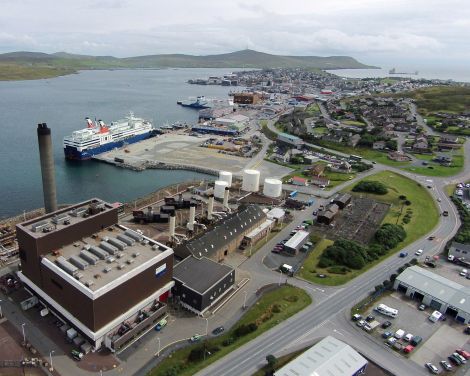News / ‘Very future of islands’ community & economy at stake’ – SIC responds to energy plans
SHETLAND Islands Council says the islands’ economic future could be jeopardised if Ofgem presses ahead with proposed plans to serve its energy needs through a subsea cable from the Scottish mainland.
In a response to the energy regulator’s consultation into the costs of connecting Shetland to the National Grid with the 60MW cable, the local authority said it does not feel it is the “optimal solution or even an adequate solution”.
It points to the benefits of instead having the long-mooted two-way 600MW interconnector transmission link – which would allow Shetland to export energy from large scale renewable projects – and says the current plans are not the most cost-effective.
Council development committee vice chairman Stephen Leask told Shetland News last month about his fears that the interconnector may have been pushed onto the backburner.
But the SIC’s consultation response – which is presented with a barbed covering letter from development director Neil Grant – brings the council’s concerns into sharp focus.
Lerwick Power Station operator Scottish and Southern Electricity Networks (SSEN) confirmed in June that a 260km subsea cable is set to be laid between Dounreay and Scalloway to replace the ageing station and connect the isles to the National Grid. Diesel back-up generators would be in place on the isles should there be problems with the connection.
If approval is granted, the new system is expected to be up and running by the end of 2020, with the power station remaining operational until it is ready.
The estimated total cost of work undertaken by partners National Grid Shetland Link Ltd and Aggreko UK Ltd over the 20-year lifetime of the new project is £581.7 million, with capital costs coming in at around £303 million.
Ofgem said the new proposal is expected to cost £188 million less over its lifetime than the back-up option, which was a replacement full duty diesel power station. SSEN proposed a new station in 2013 before being knocked back because it was felt the company had not explored other, more efficient options.
Become a member of Shetland News
Grant said that the new solution “would be detrimental to Shetland achieving its ambitions of developing a renewable energy sector and the proposed 600MW interconnector to export electricity from Shetland’s exceptional wind, wave and tidal resources.”
He believes the plans should be delayed until Ofgem obtains “clarity from the UK Government on its policy approach to provide support for remote island onshore wind”, with the Conservatives previously providing a manifesto pledge to back renewables in Scotland’s remote islands “where they will directly benefit local communities”.
“A joined-up approach to the energy supply option and export potential of renewables from Shetland would provide a more cost efficient solution in any cable option and not only save the UK consumer money but stimulate economic growth in Shetland and the North of Scotland,” Grant writes.
The council called for a “break point clause” to be added into the energy solution plans – enabling it to be put on hold if the UK Government announces a contracts for difference round that would give financial support to onshore wind projects in the Scottish islands.
The 103-turbine Viking Energy project is dependent on an interconnector being in place, while Peel Energy and Energy Isles face the same scenario with smaller developments on the outskirts of Lerwick and in the North Isles.
Grant also added that there “should be as a minimum, an opportunity to increase the capacity of the proposed cable link from 60MW up to 200MW”, and he said that “selecting a landfall further along the coast at Gills Bay, would allow for onward export of electricity into the UK National Grid via the Caithness/Moray link”.
The development director also believes that the plans fail to properly address the issue of fuel poverty, which is at an above average level of 53 per cent in Shetland.
In its more detailed response to the consultation, the SIC said that the interconnector would cost £1.17m/MW installed, while the proposed cable would equate to £4.64m/MW.
It added: “National Grid previously informed Shetland stakeholders that it is possible to scale the capacity of this 80kV interconnector up to 200MW, based on the proposed technology.
“In the event that the government does not deliver on its pledge to support island onshore wind, this expanded capacity would allow Shetland to bring forward significant development in a renewable sector, incorporating a first phase of consented onshore wind, as well as other community renewables along with the development of marine renewables.
“Shetland could potentially supply all its own generation from renewable energy and become a net exporter of clean energy. This is a sector that Shetland has been trying to develop for over 20 years, given the world class resource the islands has proven to have.”
The response also questioned whether a 60MW cable would be able to adequately deal with future load when petrol and diesel cars are phased out in Scotland by 2032 and electric or hybrid vehicles are the norm.
Become a member of Shetland News
Shetland News is asking its readers to consider paying for membership to get additional perks:
- Removal of third-party ads;
- Bookmark posts to read later;
- Exclusive curated weekly newsletter;
- Hide membership messages;
- Comments open for discussion.
If you appreciate what we do and feel strongly about impartial local journalism, then please become a member of Shetland News by either making a single payment, or setting up a monthly, quarterly or yearly subscription.










